Intel: For Mainstream Gamers, Our IGPs Are Equivalent to Discrete GPUs
by Anton Shilov on January 14, 2016 12:03 PM EST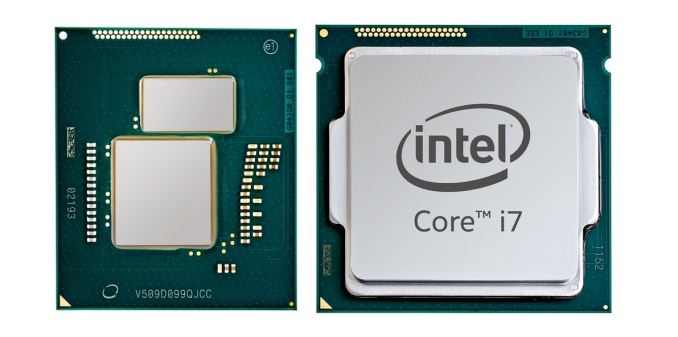
Intel’s integrated graphics processors (iGPUs) are the most widespread PC-class graphics adapters on the planet. Enthusiasts of high-performance personal computers do not use Intel’s iGPUs, but the world’s largest developer of microprocessors says that for mainstream and casual gamers its graphics solutions offer performance, which is comparable to that of inexpensive discrete video cards.
“For the mainstream and casual gamer, we have improved our Iris and Iris Pro graphics tremendously,” said Gregory Bryant, vice president and general manager of the desktop client platforms at Intel, at the J.P. Morgan Tech Forum at the 2016 International CES. “We have improved our graphics performance [by 30 times] from where it was five years ago. We believe that the performance of Intel’s integrated graphics today, what we offer in the products […], is equivalent to the performance of about 80% of discrete [GPU] installed base.”
Intel has been improving its integrated graphics cores at a rapid pace after the company cancelled its discrete graphics processing unit code-named Larrabee in 2010. Thanks to timely transition to newer process technologies, Intel could increase transistor budgets of its central processing units significantly every couple of years. As the company did not increase the number of general-purpose cores inside its mainstream CPUs for desktop and mobile personal computers in the recent years, the lion’s share of that additional transistor budget was spent on iGPU-related improvements.
Intel considers its code-named Clarkdale and Arrandale processors its first-generation CPUs with integrated graphics (which is not entirely correct since these CPUs had two dies: the processor die as well as graphics and integrated memory controller die). Back then, Intel’s most advanced iGPU featured 12 execution units (EU) with peak compute performance of around 43 GFLOPS. Since then, the architecture of Intel’s integrated graphics processors has evolved to accommodate new features and gain performance. Today, each EU features two ALUs that can execute up to four 32-bit floating point or integer operations per cycle (in fact, one of the two ALUs in Intel’s Gen8 EU also supports double precision 64-bit floating point operations). Intel’s latest microprocessors — Broadwell with GT3e and Skylake with GT4e graphics cores — have Iris Pro iGPUs with 48 and 72 EUs as well as peak compute performance of 883 and 1152 GFLOPS, respectively.
While Intel did not define what it considered to be the installed base of discrete graphics cards, it is obvious that the company compares its recent Iris and Iris Pro integrated graphics processors to discrete graphics adapters sold in the last five or even more years and which are currently in use.
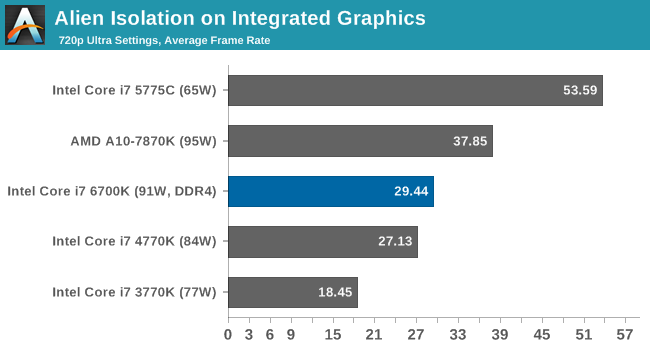
Intel’s latest integrated graphics processor found in its Skylake chips — the Iris Pro 580 with 72 execution units and 1152 GFLOPS compute performance — should outperform even more advanced discrete graphics processors. In fact, AMD's latest integrated graphics core also outperforms the low-end graphics card (albeit, by a small margin).
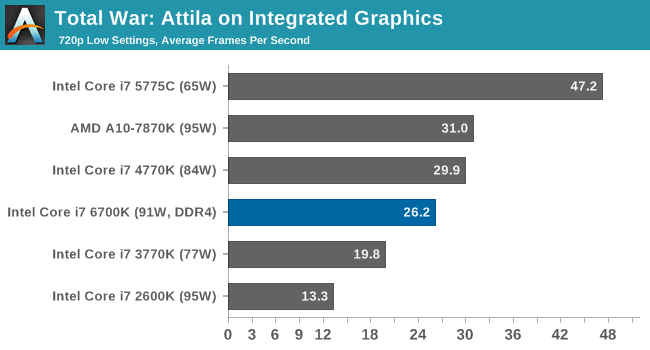

Because many people do not play demanding games that use the latest application programming interfaces (APIs), performance and features of Intel’s modern iGPUs may be enough for their needs. Moreover, since casual and even some mainstream gamers usually buy low-end graphics adapters, Intel’s Iris Pro 6200 and Iris Pro 580 can actually outperform such GPUs (or offer similar performance). It is not clear whether 80% of discrete graphics boards currently in use belong to the entry-level segment, but it evident that contemporary iGPUs are somewhat better than cheap video cards.
Even though enthusiast gamers do not use Intel’s high-end iGPUs, the company continues to thrive because of PC gaming. According to Intel’s management, sales of its Core i7-series microprocessors set records in Q2 2015 despite weak demand for personal computers overall. Moreover, Intel claims that shipments of high-end enthusiast-class hardware in general are at all-time high and growing. Intel sells not only powerful Core i7 CPUs with unlocked multiplier to demanding gamers, but also chipsets, solid-state drives, various controllers and other components for high-end PCs. As a result, the company takes advantage of increasing demand for powerful personal computers.
Source: Intel Investor Relations


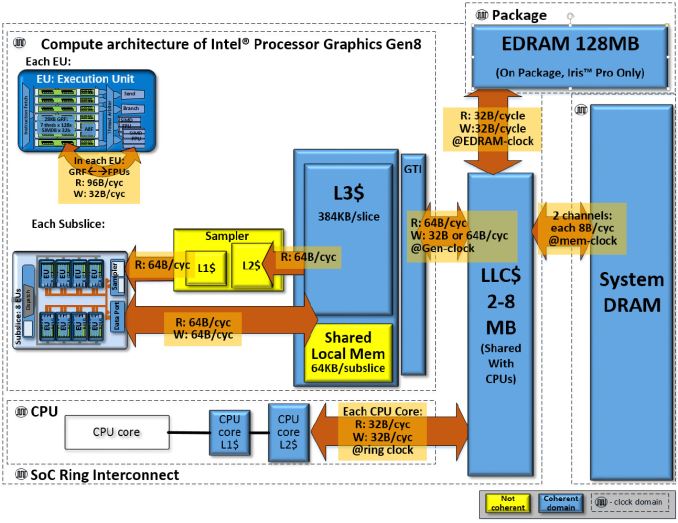
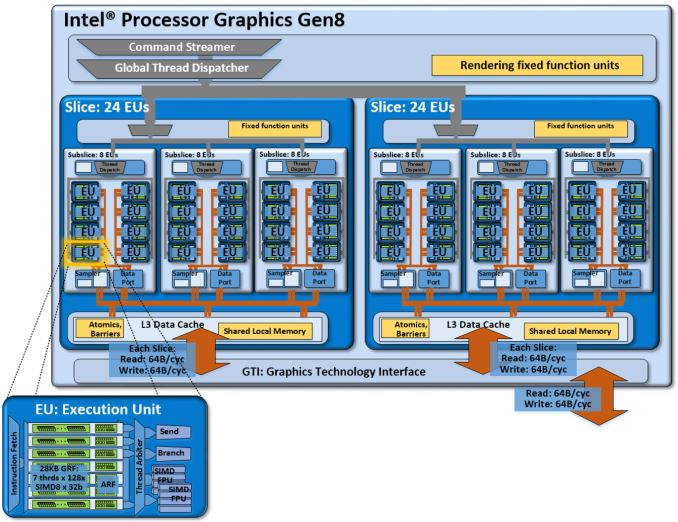








96 Comments
View All Comments
webdoctors - Thursday, January 14, 2016 - link
Anandtech did put prices in the graph. Maybe this whole exercise is in graph comprehension and logic.Based off those graphs, it looks like buying an i3 for $120 is the best bang for buck, paired with a $150 750TI, you'd be ahead in every respect.
This lineup makes no sense, the pricing is ridiculous on those "integrated" iGPUs.
Ktracho - Thursday, January 14, 2016 - link
I realize this article is not a full blown review, but I would have expected Anandtech to at least add a few words (outside of the graphs) mentioning the option of getting a much cheaper CPU along with an affordable discreet GPU, with bonus points for adding such a configuration in the graphs.fanofanand - Thursday, January 14, 2016 - link
I seem to have this same graphc comprehension issue you speak of, I see wattage listed but not price. Where are you seeing that?baobrain - Thursday, January 14, 2016 - link
LOLYeah, no.
silverblue - Thursday, January 14, 2016 - link
I'm not sure Intel's (or AMD's, for that matter) compute performance really means that much here. The A10-7890K should have similar compute performance to the Iris Pro 580 but they're hardly going to perform on an equal footing in the benchmarks listed here.extide - Thursday, January 14, 2016 - link
Come on, where is at least a pipeline article about the A1100 launch today??10101010 - Friday, January 15, 2016 - link
Anandtech is still waiting for Intel to write the article, so they can post it.jjpcat@hotmail.com - Thursday, January 14, 2016 - link
One thing that puzzles me for year is that, all 5 top PC vendors disable iGPU and replace it with dirt cheap dGPU which is, at best, marginally faster. At this bottom layer, I don't think a 20-30% graphics performance increase can justify the cost, power consumption, and noise associated with dGPU. In 1 extreme case, Asus used an AMD dGPU to disable the AMD iGPU. Only in this case that iGPU has 2X the performance of that dGPU.I don't think I am the only person surprised by this seemingly stupid action from the PC vendors. When AMD started releasing "powerful" iGPU, they thought the demand for low-end dGPU would be greatly reduced. They thus put little resource in those dGPU. They later admit in an earning conference call that they were shocked that NVDA sold so many 610/615/620.
This strange phenomenon is more prominent in Asia.
cfenton - Thursday, January 14, 2016 - link
That's just the result of marketing. Saying your computer has a 2GB discrete graphics card makes the average consumer think it's better than the computer sitting next to it that has Intel HDXXXX integrated graphics. A dedicated anything sounds better than integrated, even if it's not. It's the same reason you see those companies trying to sell $2000 gaming PCs with high end i7s, 32GB of RAM, a giant (mechanical) drive, and then a GTX 950 or 960. Unless you are way into computer hardware, its really difficult to tell what's good and what isn't and the companies take advantage of that.ToTTenTranz - Thursday, January 14, 2016 - link
I have to agree with most of the complaints here.Intel's point is moot if the price for their GT3e CPUs is the same as a lower-end CPU + much faster discrete GPU.
If they had a $150 Core i3 with a GT3e, they might have a point. Since their cheapest CPU with GT3e costs close to $300, their argument is ridiculous.